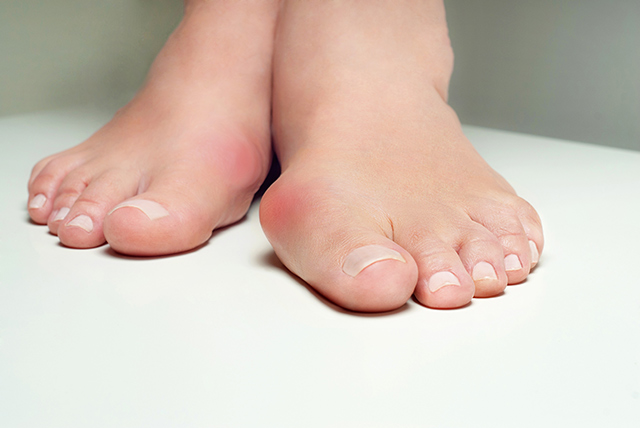Top 10 medicinal plants you can grow yourself
07/17/2015 / By Greg White

Plants have been used for thousands of years for medicinal purposes. Most medicine is derived from plants before they are laced with synthetic chemicals by pharmaceutical companies. You can cut the middle man out and grow medicinal plants in your very own garden. Freshly harvested herbs are inexpensive, are easy to grow, treat a wide range of illnesses and contain few side effects in comparison to over-the-counter drugs. Rather than consulting your nearest pharmacist at the first signs of illness, you can consult your nearest garden. Start cultivating your medicinal garden today with these powerful healing herbs.
1. Marigolds
Marigolds are orange and yellow garden flowers that you may already have in your backyard. They are loaded with antioxidants that can ward off free radicals, unstable molecules that damage DNA and cause cancer cells to proliferate. Researchers from Washington State University found that lutein, an antioxidant in marigold extract, can reduce and prevent tumors from spreading in mice. In addition, marigolds work as an anti-inflammatory, which can provide relief to irritated skin, scrapes and burns. They also make an excellent pest repellent that paralyzes insects seconds after being consumed.
2. Basil
Basil is great for Italian cuisine, but it’s also great for your health. It’s an excellent source for beta-carotene, an organic compound that the body converts into vitamin A. The body needs vitamin A for healthy vision, cell growth and immune system function. Basil oil contains a liquid called eugenol that can soothe swelling bones and joints in a similar way to how Advil and ibuprofen work. As an antibacterial, basil oil can inhibit bacteria that have become resistant to antibiotic drugs from spreading. You can transform both your garden and health with this amazing herb.
Mother Nature's micronutrient secret: Organic Broccoli Sprout Capsules now available, delivering 280mg of high-density nutrition, including the extraordinary "sulforaphane" and "glucosinolate" nutrients found only in cruciferous healing foods. Every lot laboratory tested. See availability here.
3. Chinese yam
Chinese yam is a vine credited for its therapeutic effects. It’s particularly well known for strengthening the spleen and stomach. The vitamin B6 in yams helps protect against heart disease by breaking down homocysteine, an amino acid that damages blood vessel walls. They’ve been used to soothe sore throats, treat diarrhea, and control blood sugar levels and weight gain. You can pluck this cinnamon-scented vine from the garden and eat it raw.
4. Lemon balm
As member of the mint family, lemon balm is known for its pleasant aroma. It’s been used for centuries to aid sleep, reduce anxiety, improve digestion, and treat lesions and cold sores. Research from the University of Maryland has shown that lemon balm is an effective treatment for herpes lesions around both the mouth and genitals. A substance in lemon balm called eugenol fights bacteria and is often applied topically to cavities by dentists. Dried lemon balm leaves can be added as a garnish to salads or made into a hot tea.
5. Thyme
Thyme is an herb belonging to the plant genus Thymus, which is indigenous to Europe and Asia. Commonly used for decorative purposes, bees use thyme’s pollen to make delicious honey. It’s a potent antiseptic and antibacterial agent too. Research from the University of Manitoba, Canada, reports that thyme can help reduce bacterial resistance to antibiotics like penicillin. Further research from the Leeds Metropolitan University, England, found that thyme preparations can better treat skin acne than prescription creams. It can be used to treat respiratory and gastrointestinal problems, sore throat and arthritis as well. It’s a lovely plant to add to your garden that can be stored to enhance its flavor.
6. Sage
Grown all over the world, sage is a colorful plant native to the Mediterranean marked by blue, purple, white and pink flowers and leaves. The herb has a reputation for treating digestion, muscular spasms and mental problems. Full of anti-inflammatory, antioxidant and antimicrobial properties, sage boosts the immune system and can be used to treat fungal infections. It’s also been shown to help ease menstrual cramps and hot flashes in women. Research suggests sage extract can improve cognitive function and may even serve as a possible treatment for Alzheimer’s disease. The herb is an aesthetically pleasing addition to any garden and can enhance the flavor of many dishes.
7. Echinacea
Echinacea is one of the most popular herbs in the United States and was originally used by Native Americans to treat wounds and infections. People today use echinacea to shorten the life span of colds and sinus infections. It’s recommended by many herbalists to treat urinary tract infections, migraines and bee stings. As a drought-resistant flower, echinacea is easy to add to your garden. The plant blooms into a beautiful coneflower during mid-summer. You can make echinacea into an iced tea on those hot summer days.
8. Nettle
Nettle is a plant used for hundreds of years by health practitioners to treat arthritis, gout, allergies, insect bites and urinary tract infections. Nettle is marked by its stinging hairs. Although the stinging hairs sting whatever they come into contact with, they have a reverse effect whenever they come into contact with skin that is already irritated. Nettle is a delicious and cleansing weed that is surprisingly versatile in the kitchen.
9. Comfrey
Comfrey is a plant that provides comfort in more ways than one. It’s recognized by its bristly hairs and drooping flowers. The herb contains a compound called allantoin, which serves as a moisturizer in several skin care products. Comfrey was used by Greek physicians and continues to be used to treat broken bones and heal open wounds faster. Scientific research vindicates these claims. Multiple studies have found that comfrey can help treat dermatitis, ulcers and swollen ankles. A word of caution, however: Comfrey does contain trace amounts of cancer-causing alkaloids. For this reason, many herbalists recommend that you do not consume comfrey internally.
10. Yarrow
Yarrow is an easy-to-care-for plant that effects almost every organ in the body, including the spleen, liver, kidneys and bladder. According to Greek myth, the legendary warrior Achilles used yarrow to treat open battle wounds. Loaded with anti-inflammatory, antimicrobial and antioxidant properties, this miracle herb treats everything from bleeding wounds to gastrointestinal problems. It can be used as a remedy for the treatment of rashes, fever and high blood pressure. The plant contains alkaloids that can provide pain relief for menstruation too. You can harvest yarrow from your garden for first aid uses, and add it to salads, meats, soups or stir-fry.
Gardens aren’t just aesthetically pleasing; they are a source of food, medicine and life. By growing your own medicinal herbs, you can save yourself a big check from Big Pharma. Better yet, you can save your health.
Sources include:
http://www.naturalfoodbenefits.com
http://www.medicalnewstoday.com
Tagged Under: basil, comfrey, gardening, medicinal plants, natural medicine, thyme




















